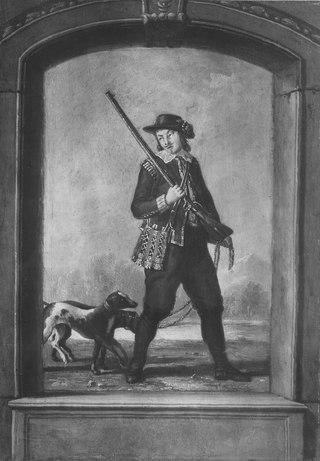Related Research Articles

Sophia Magdalena of Denmark was the queen consort of Sweden as the wife of King Gustav III. She was liked by many in the Caps party, believing she was a symbol of virtue and religion. In 1771, Sophia's husband ascended to the throne and became King of Sweden, making Sophia Queen of Sweden. Their coronation was on 29 May 1772.

Princess Sophia Albertina of Sweden was the last Princess-Abbess of Quedlinburg Abbey, and as such reigned as vassal monarch of the Holy Roman Empire.

Ulriksdal Palace is a royal palace situated on the banks of the Edsviken in the Royal National City Park in Solna Municipality, 6 km north of Stockholm. It was originally called Jakobsdal for its owner Jacob De la Gardie, who had it built by architect Hans Jacob Kristler in 1643–1645 as a country retreat. He later passed on to his son, Magnus Gabriel De la Gardie, from whom it was purchased in 1669 by Queen Hedvig Eleonora of Sweden. The present design is mainly the work of architect Nicodemus Tessin the Elder and dates from the late 17th century.

Princess Wilhelmina Caroline of Denmark and Norway, was the Landgravine consort of Hesse-Kassel and later the Electress of Hesse-Kassel by marriage to William I, Elector of Hesse.

Adolf Fredrik, Count Munck, was a Swedish and Finnish noble during the Gustavian era. His family name is sometimes inaccurately given as "Munck af Fulkila" because his father usurped this family's title in the Swedish Diet but, as a matter of fact, without genealogical justification.

Hedvig "Hedda" Eleonora von Fersen was a Swedish noble, lady in waiting to the Swedish queen, Sophia Magdalena of Denmark. She was the daughter of Axel von Fersen the Elder and Hedvig Catharina De la Gardie and the sister of Count Axel von Fersen the Younger, Sophie Piper and Fabian von Fersen (1762–1818). In 1773, she married marshal Baron, later Count Thure Leonard von Klinkowström in his second marriage, and with him had four children, among them the artist Hedvig Amalia Charlotta Klinckowström and Count Axel Leonhard von Klinckowström, member of the Royal Swedish Academy of War Sciences and la Société pour l'encouragement de l'industrie nationale.
Anna Sofia Ramström (1738–1786) was a kammarfru of the Queen of Sweden, Sophie Magdalena of Denmark. She was known for her involvement in the famous affair of the consummation of the marriage between the royal couple.

Ulrika "Ulla" Eleonora von Höpken, later von Wright, née von Fersen, was a Swedish countess and courtier. She is also famous in history as one of "the three graces" of the Gustavian age; three ladies-in-waiting immortalized in the poem Gracernas döpelse by Johan Henric Kellgren. She was a leading socialite and trendsetter in contemporary Sweden, and one of the best known personalities of the Gustavian age.

Charlotta "Charlotte" du Riez or Du Rietz, née De Geer (1744–1820) was a Swedish baroness, known as a love object of King Gustav III. It is unknown whether or not she was ever physically involved with the monarch.
Maria Aurora Uggla, married name Ehrengranat (1747–1826), was a Swedish lady in waiting and noble. She was the lady in waiting and confidant of the Swedish Queen, Sophia Magdalena of Denmark, and later the head of the court of Crown Prince Gustav Adolf.
Fredrika Eleonora von Düben was a Swedish dilettante painter and embroidery artist

Charlotta "Lotta" Fredrika Sparre, commonly named Lotta Sparre, was a Swedish noble and courtier.
Johanna "Jeanna" von Lantingshausen, née von Stockenström, (1753–1809), was a Swedish noble and courtier. She is foremost known as the instigator of the political demonstration by the noblewomen toward Gustav III in opposition of his parliamentary act of 1789.
Caroline Lewenhaupt (1754–1826) was a Swedish courtier, poet and amateur actress.
The Marriage of Gustav III is a Swedish television series in two parts built upon a period in the life of King Gustav III of Sweden. The series aired in 2001. The director was Marcus Olsson and the manuscript writer was Klas Östergren.

Georg Johan De Besche (1754–1814) was a Swedish courtier, colonel, governor and a favorite of Gustav III of Sweden.
Virginia Charlotta "Charlotte" Manderström, née Duwall (1748–1816), was a Swedish lady in waiting and noble. She was the lady in waiting and favorite of the Swedish Queen consort, Sophia Magdalena of Denmark.
Anna Maria Hjärne née Ehrensvärd (1718-1798) was a Swedish courtier; överhovmästarinna to the queen of Sweden, Sophia Magdalena of Denmark, from 1766 to 1777.
Ulrica Catharina Stromberg (1710-1777) was a Swedish courtier; överhovmästarinna to the queen of Sweden, Louisa Ulrika of Prussia, from 1754 to 1761.
Hedvig Sofia von Rosen, née Stenbock was a Swedish countess and courtier. She was the överhovmästarinna of the future Gustav IV Adolf of Sweden in 1778–1781, and for his brother Prince Carl Gustav, Duke of Småland in 1782–1783.
References
- Sophia Magdalena, Svenskt biografiskt lexikon (artikel av Mikael Alm 2003-2006), hämtad 2015-02-16.